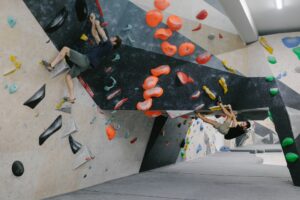Australia’s urban environments are a unique blend of heritage, modernity, and sustainability. Behind the seamless integration of public spaces, transport systems, and community amenities are visionary urban planners and designers who’ve helped shape the cities we know and love today. While innovation continues across many sectors, urban planning remains a cornerstone of city liveability.
This evolution isn’t just about building roads and high-rises—it’s about creating spaces people want to live in, explore, and engage with. From street furniture integration to park furniture in Melbourne to large-scale public infrastructure – councils, urban planners and street furniture companies all work together to create the spaces we know and love today.
Let’s explore how several pioneering Australian men have shaped the landscape of modern Australian cities.
Robin Boyd – The Voice for Architectural Clarity
Robin Boyd (1919–1971) was more than an architect; he was a social critic, author, and advocate for design integrity. Through his influential book The Australian Ugliness, Boyd challenged cookie-cutter suburban developments and advocated for thoughtful, locally responsive design. He was a strong supporter of modernism in architecture and urban planning and believed in the cultural value of good design for everyone. His legacy continues through the Robin Boyd Foundation and his push for human-centred environments still resonates in today’s use of street furniture that prioritises both form and function.
Jan Gehl (Consultant to Melbourne) – The Man Who Made Cities for People
Though Danish, Jan Gehl played a pivotal role in transforming Melbourne’s cityscape during the 1990s and early 2000s. His consultancy with the City of Melbourne helped inspire a new way of thinking about public space—focusing on pedestrian-friendly environments and livable streets. Gehl’s influence can be seen in laneway activations, wide footpaths, and inviting public zones with quality street furniture companies providing spaces to sit, pause, or connect. His work helped shift Melbourne’s identity from a car-dominated city to one where people now take centre stage.
Professor Peter Newman – The Champion of Transit-Oriented Design
Professor Peter Newman is one of Australia’s most respected voices in sustainable urban development. Known for coining the term “automobile dependence,” Newman advocates for integrated transport planning and density that supports public and active transport. His work on Perth’s rail revival has influenced how other cities tackle urban sprawl. With active transport comes the need for quality infrastructure—bike lanes, pedestrian paths, and inviting stops that may include shaded areas, park furniture in Melbourne, and drinking fountains. Newman’s approach blends urban planning with behavioural insight, showing that good design supports healthier, greener lifestyles.
Tim Ross – Comedian, Advocate, and Urban Design Communicator
Tim Ross may be best known for his work in comedy and broadcasting, but his contributions to architecture and urbanism are both significant and unique. Through his television series Streets of Your Town and countless speaking events, Ross has brought urban design into the mainstream. By making architecture relatable and engaging, he plays a vital role in public education about how our cities are shaped. His advocacy extends to preserving mid-century modern buildings and promoting public awareness around the value of good urban design—including the thoughtful integration of park and street furniture into daily life.
How Urban Design is Brought to Life
While these men each contributed in different ways—through policy, education, activism, or hands-on design—their collective legacy is evident across Australian cities. From Melbourne’s revitalised laneways to Perth’s rail system and Sydney’s integrated parklands, their influence underscores the importance of good design at every scale.
These visionaries understood that city life thrives when people feel connected to their environment. Public amenities—whether that’s street furniture companies building long-lasting benches, or planners incorporating green corridors—help bring people together and encourage daily interactions in shared spaces.
The Ongoing Impact of Thoughtful Urban Design
Today, the work of these pioneers lives on in the everyday details of our cities. A well-positioned bench. A protected bike path. A shaded public square. These small interventions, often developed in collaboration between urban designers and street furniture companies, have a lasting impact on how Australians engage with their iconic cities.
The continued investment in quality street furniture, park furniture in Melbourne, transport infrastructure, and people-focused streetscapes proves that their legacy is still very much alive. As the conversation around urban sustainability and livability continues to grow, we’ll no doubt see a new generation of planners and designers taking cues from these trailblazers—transforming cities not just for the now, but for generations to come.





